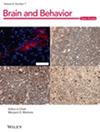Persian Mentalized Affectivity Scale (MAS): Reliability, Validity, and Cultural Considerations
Abstract
Introduction
Mentalization and emotion regulation are increasingly recognized as key factors in the development and persistence of psychological disorders. Mentalized affectivity, an integrative construct encompassing both, reflects an individual's capacity to reflect upon and regulate emotions. Despite the growing interest in this construct, cross-cultural validation of its measurement remains limited. This study aimed to examine the psychometric properties of the Persian version of the Mentalized Affectivity Scale (MAS) in an Iranian adult sample.
Methods
A total of 923 participants were recruited through convenience sampling and divided into two independent samples (N1 = 473, N2 = 450). In addition to the MAS, measures assessing emotion regulation and reflective functioning were administered in the second sample to evaluate concurrent validity. Exploratory factor analysis (EFA) and confirmatory factor analysis (CFA) were conducted to determine the factorial structure of the MAS. Internal consistency and correlation analyses were performed to assess reliability and construct validity.
Results
EFA yielded a four-factor model, encompassing Identifying Emotions, Processing Emotions, Expressing Emotions, and Recognizing Emotions. This structure diverges from the original three-factor model, potentially reflecting cultural distinctions in emotional processing. The strongest correlation coefficients were observed between Processing and Recognizing Emotions, which were previously merged as a single factor in the original scale. Internal consistency was excellent, with Cronbach's alpha values ranging from 0.847 to 0.895 and McDonald's omega ranging from 0.831 to 0.904, confirming the reliability of the Persian MAS.
Conclusion
The findings provide preliminary validation for the Persian version of the MAS, supporting its factorial validity, reliability, and applicability for assessing mentalized affectivity in nonclinical populations. Given the scarcity of culturally adapted measures of mentalization in Iran, the MAS represents a valuable tool for both research and clinical settings.


 求助内容:
求助内容: 应助结果提醒方式:
应助结果提醒方式:


